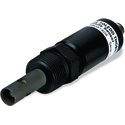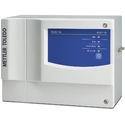Microelectronics Water Systems
Improved Yield and Increased Sustainability
Programme
- Updates on the recent standards and guidelines for UPW in the microelectronics industry.
- Review of the water cycle and how to reduce UPW discharge and meet sustainability goals.
- Key UPW analytical measurements to increase yield of semiconductor manufacturing process and the role they play in the wafer processing.
Microelectronics is the largest industrial user of ultrapure water (UPW), which is critical to the quality and yield in the production of wafers and integrated circuits. Today, the industry is challenged with linewidths in the 2 to 3 nanometer range, requiring more accurate measurements and better-quality water, as well as improved sustainability with increased goals for water reclaim, reuse, and recycle. With demand for semiconductors continuing to grow and the rapid advancements in the industry, critical analytical parameters are required to continuously produce UPW for improved yield and increased sustainability, along with the knowledge of how to use these measurements for maximum efficacy.
What to Measure, Where to Measure, and Why
The presenter will look at real-time and rapid on-line total organic carbon (TOC) control to assure removal of organics and prevent bacterial contamination, plus new technology for UPW resistivity measurement to eliminate environmental temperature impacts. Resistivity to control the ionic UPW quality and its role in the RCA process, wet bench, and other SEMI tools will also be discussed, along with strategies for the reclaim/reuse/recycle for improving water sustainability.
Speakers

Jim Cannon
Head of OEM & Markets, METTLER TOLEDO Thornton
After receiving a B.S. in Biology, Mr. Cannon continued with graduate degrees in Microbiology and in Biophysics, and an MBA in Marketing and International Management. Mr. Cannon has over 40 years of experience in the management, design and development of ultrapure water treatment and technology. This includes measuring differential conductivity and UV oxidation for the detection of TOC in UPW and the design and commercialization of electrodeionization modules. Mr. Cannon is currently involved in the standards and regulatory organizations for the Semiconductor, Photovoltaic and Pharmaceutical markets, including the facilities and liquids committee, Reclaim/Reuse/Recycle Task Force and the UPW task Force. He has also been intimately involved in the development and the commercialization of alternative online microbial detection technology.



